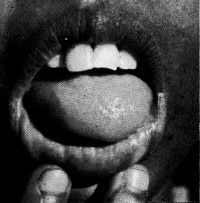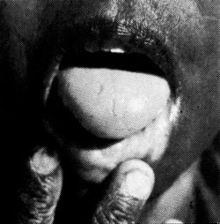Hesperian Health Guides
Poor Nutrition in Children with Disabilities
HealthWiki > Disabled Village Children > Chapter 36: Feeding > Poor Nutrition in Children with Disabilities
Poor nutrition (malnutrition) usually results from not getting enough to eat and is one of the most common causes of health problems. With its signs of weakness, thinness, failure to grow, and reduced ability to fight off illness, poor nutrition might be considered a disability itself. It affects at least 1 out of every 3 children under 5 years old, mainly those who live in countries whose resources are being drained by the US and Europe.
In this book, we do not discuss the problems of malnutrition in detail, because they are covered in most primary care handbooks (see Where There Is No Doctor, Chapter 11). However, a special warning is called for.

WARNING! Children with disabilities are often in greater danger of malnutrition than are other children.
 |
| This 4-year-old with spina bifida has no difficulty eating any foods. Yet his family still treats him like a baby — complete with a baby bottle filled with a sweet drink — just because he has a disability. |
Sometimes this is because the child has difficulty sucking, swallowing, or holding food. Sometimes it is because the family gives more food to the children who are stronger and more able to help with daily work. Sometimes it is because the family doesn’t know that a child with HIV needs more food than other children. Sometimes, however, it is because parents, although they treat their disabled child with extra love and care, keep bottle feeding him (with milk, rice water, or sugared drinks) until he is 3 or 4 years old or older. They keep treating—and feeding—their child like a baby, even though he is growing bigger and needs the same variety and quantity of foods that other children need.
To give a child only—or mainly—milk and sweet drinks after 6 months of age will cause him to slowly become malnourished. Milk and sweet drinks lack iron, so that the child may become more and more pale, or anemic (weak blood).
 |
 |
| Not Anemic: Lips, tongue and fingernails have a reddish, healthy color. | Anemic: Lips, tongue and fingernails pale. Lack of energy. Tires quickly. |
CAUTION! ! It is important that children with disabilities get enough healthy food to eat. It is also important that they get enough exercise to make their muscles as strong as they can be and to keep their lungs (breathing) and heart (circulation) strong. |
 |
REMEMBER: A child with disabilities needs the same foods that other children of the same age need.


